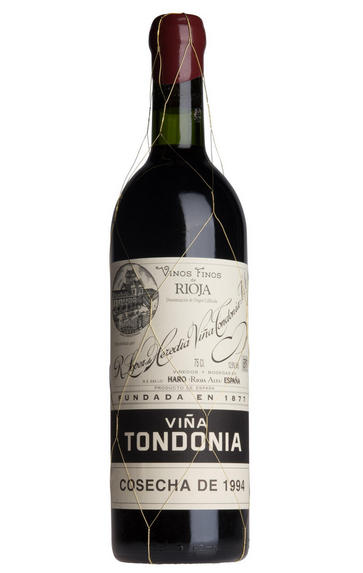
1994 Viña Tondonia Tinto, Gran Reserva, Bodegas R. López de Heredia, Rioja, Spain
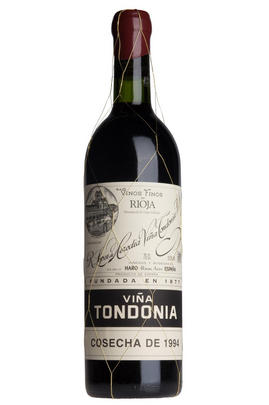
Critics reviews
Neal Martin - 31/08/2012
About this WINE
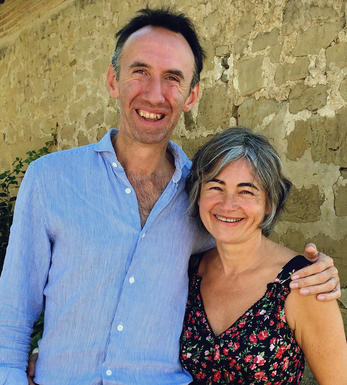
Bodegas R. Lopez de Heredia
Bodegas López de Heredia (LDH) is one of the wine world’s great wine treasures. Founded in 1877 by Don Rafael López de Heredia y Landeta, it remains safely in family hands to this day.
The imposing bodega was built close to Haro railway station, significant for Rioja’s access to the ideas of Bordeaux. It survives as one of the foundation stones of the modern Riojan wine industry.
Unusually for Rioja, Lopez de Heredia produce wines solely from the fruit of their own 170 hectares of vines. These vines are in four separate vineyards arranged on the alluvial slopes overlooking the river Ebro, on the cusp of the sub regions Alta and Alavesa. Each is given its own expression in their wines Tondonia, Bosconia, Cubillo and Gravonia.
The grapes planted here are mainly Tempranillo with some Graciano, Garnacha and Mazuelo for the reds and Viura with Malvasia for the whites. The age of the vines plays a significant role in the character and quality of the wines, with some plantings reaching 80-100 years old. These gnarled vines deliver naturally low yields and help to bring high levels of complexity in the final wines.
LDH are not particularly vocal about their efforts around sustainability. This is because they don’t wish to promote their wines on the basis of practices they consider normal. Having never adopted the chemical regimes which became so widespread, they have not had to reverse any of the damage. They continue to manage their vineyards in a fashion which Don Rafeal would still recognise today.
The bodega itself is a cathedral of wine, with towering vats and stacks of barrels. Visitors can be left in no doubt as to the venerability of this place and the importance of tradition. As is typical in Rioja, oak has a significant role to play here. But new barrels, made onsite in their own cooperage, are broken in with wines which are reserved for bodega celebrations. When the barrels go into service after three years of seasoning the influence they exert on the wines is a slow and gentle development of personality rather than overpowering vanillin and lactones.
Wines are released with considerable age (far more than any legal requirements) and only when LDH deem them ready. If something runs out in the marketplace, they don’t rush to replace it; the new vintage will follow only when it’s finished. (A sometimes frustrating, but ultimately rewarding, experience for devoted followers.) In fact, not rushing is at the heart of the way the family works, in the vineyard and in the winery.
Their range of reds opens with their unusually complex and intriguing Crianza Cubillo. The three years which Cubillo spends in cask, plus four to five years in bottle before release, exceeds the legal levels for Gran Reserva. Bosconia Reserva appears in a Burgundy bottle – a hint as to the elegant yet full-bodied wine within. In exceptional years, a Bosconia Gran Reserva is also made. This is only released 20 years after the vintage, and it is predictably scarce.
LDH’s most famous and largest vineyard is the magnificent Tondonia, first established by Don Rafael in 1913. It’s made up of 100 ha of red and white grapes. Tondonia Reserva is always full of energy; a showcase for the bodega’s trademark freshness. The Gran Reserva is only made in the best years; it has massive concentration and demands long ageing.
The white wines are nothing short of extraordinary. Viña Gravonia is made from 24ha of Viura grown in the Zaconia vineyard near the banks of the river Ebro. This vineyard ticks every conceivable box to produce white grapes which achieve ripeness and intricate character. An intricacy which is further enhanced by four years in cask and at least the same again resting in bottle before release. The two Tondonia Blancos – Reserva and Gran Reserva – go further still, spending six and 10 years in cask respectively.
Their oxidative style is not to all tastes, but – for those who enjoy them – they are impossible to substitute. Served with food they positively gleam.
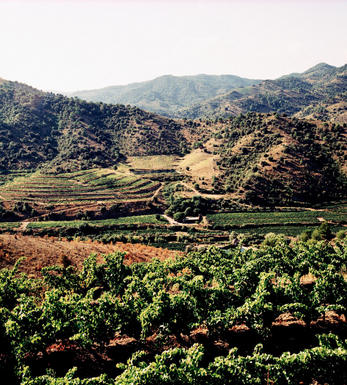
Rioja
Rioja is known primarily for its reds although it also makes white wines from the Viura and Malvasia grapes and rosés mainly from Garnacha. Most wineries (bodegas) have their own distinct red wine formula, but are normally a combination of Tempranillo, Garnacha and sometimes Graciano. Other red varieties recently approved into the Denominación de Origen Calificada (DOCa) regulations are the little-known Maturana Tinta, Maturana Parda, and Monastel (not to be confused with Monastrell). The most important of these by far is the king of native Spanish varieties, Tempranillo, which imbues the wines with complex and concentrated fruit flavours.
The Garnacha, meanwhile, bestows its wines with warm, ripe fruit and adds an alcohol punch. Graciano is an améliorateur grape (one that is added, often in small proportions, to add a little something to the final blend) and is found mainly in Reserva and Gran Reserva wines, albeit in small quantities (two to five percent), adding freshness and aroma, and enhancing the wines' ageing potential.
Crianza wines are aged for one year in oak followed by maturation for one year in bottle before being released for sale. Reservas must undergo a minimum of three years’ ageing before release, at least one of which should be in oak casks. Finally, Gran Reservas, which are only produced in the finest vintages, must spend at least five years maturing, of which at least two must be in oak.
Geographically, Rioja is divided in to three districts: Alavesa, Alta and Baja. Rioja Alavesa lies in the northwest of the La Rioja region in the Basque province of Álava. Along with Rioja Alta, it is the heartland of the Tempranillo grape. Rioja Alta, to the north-west and south of the Ebro River in the province of La Rioja, stretches as far as the city of Logroño. Elegance and poise is the hallmark of wines made here with Rioja Alta Tempranillo. Mazuelo (Carignan) is occasionally added to wines from this area to provide tannins and colour. Rioja Baja, located to the south-east, is the hottest of the three districts and specialises in Garnacha.
Rioja has witnessed a broad stylistic evolution over the years. The classic Riojas pioneered by Murrieta and Riscal in the 19thcentury were distinguished by long oak-barrel-ageing whereas the modern style, represented by Marqués de Cáceres since 1970, showcases the fruit and freshness of Tempranillo, keeping oak ageing to the legal minimum. The post-modern school that emerged in the late 1990s from producers like Palacios Remondo and Finca Allende concentrate on making wines from old vines or specific vineyard plots to accentuate the terroir, and using larger proportions of minority varietals such as Graciano.
The alta expression wines, pioneered by Finca Allende (among others) and later taken up by almost every other producer in Rioja, represent the newest flagship category in Rioja. Alongside the traditional Gran Reservas, alta expression wines are limited production and come from low-yielding vines, often from a single vineyard, and are hand-picked. Excellent examples of this style are Artadi's Pagos Viejos and El Pison.
However, modernisation has not held back the continuation of successful traditional styles as well. Happily long-established houses such La Rioja Alta, CVNE and Marques de Vargas continue to make graceful, old style wines better than ever before.
White Rioja is typically produced by the Viura grape which must comprise at least 51 percent of the blend; the rest can be made up by other, recently-authorised varieties, namely Sauvignon Blanc, Chardonnay and Verdejo, as well as the native Maturana Blanca, Tempranillo Blanco, and Turruntés (not to be mistaken for Torrontés).
Recommended Producers:
Finca Allende, Amezola de la Mora, Artadi, CVNE, Marqués de Vargas, Palacios Remondo, La Rioja Alta, Murrieta.
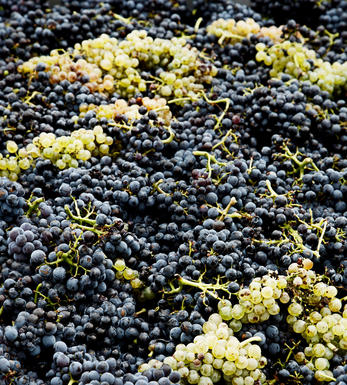
Other Varieties
There are over 200 different grape varieties used in modern wine making (from a total of over 1000). Most lesser known blends and varieties are traditional to specific parts of the world.


Buying options
Add to wishlist
Description
1994 was one of the greatest post-war Rioja vintages, its mild spring and extended growing season ideal for Gran Reservas in particular. It should come as no surprise, therefore, that the Tondonia Gran Reserva is a little special…
The blend is 75% Tempranilo and 15% Garnacha with the balance shared equally between Graciano and Mazuelo, aged in American barrel for nearly ten years with racking taking place twice a year.
The ageing potential for this wine is extraordinary; at the moment the colour is dense and rich and the aromatics combine gentle vanillin with dried fruit and hints of spice. All is in place for a fascinating evolution, which is not to say that one should overlook its current charms.
Simon Field MW - Wine Buyer
Bodegas R. López de Heredia is one of the wine world’s great treasures. Founded in 1877 by Don Rafael López de Heredia y Landeta, the bodega was built close to the railway station at Haro, in Rioja, its location geographically symbolic for proximity of access to the ideas of Bordeaux and practically useful for transportation of both grapes and wines. The quality of the wines is such that they have maintained a plateau of perfection for years.
wine at a glance
Delivery and quality guarantee